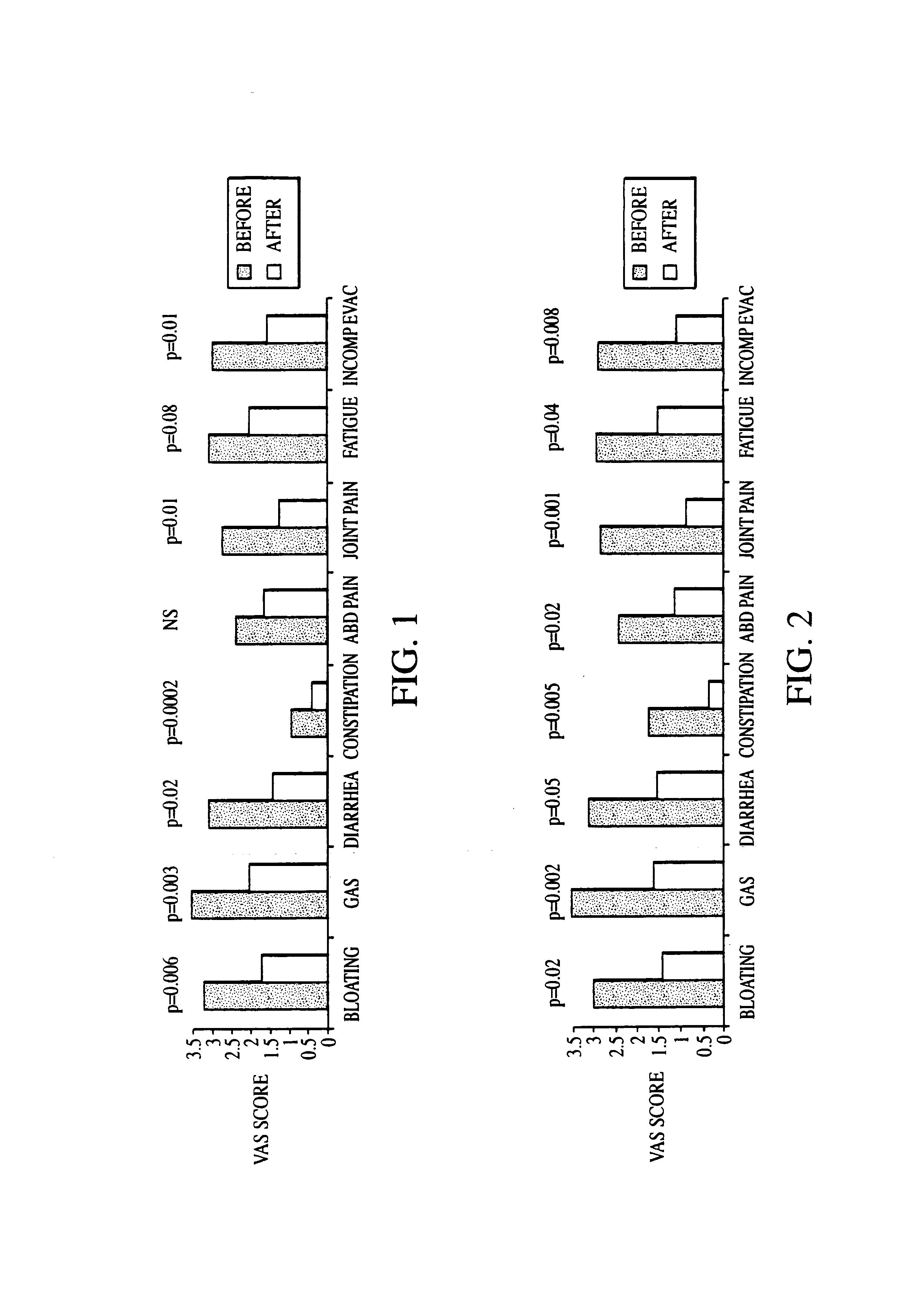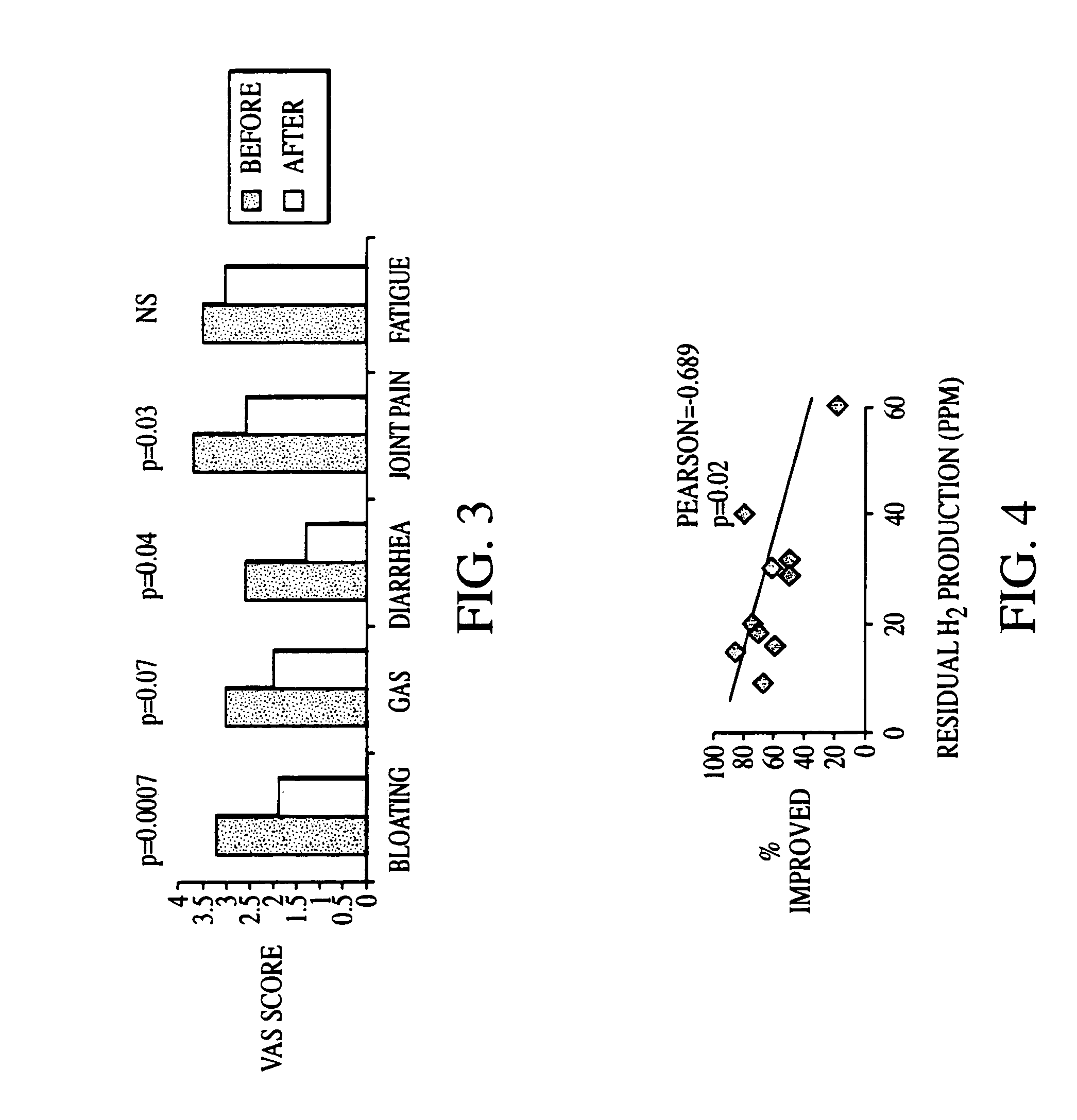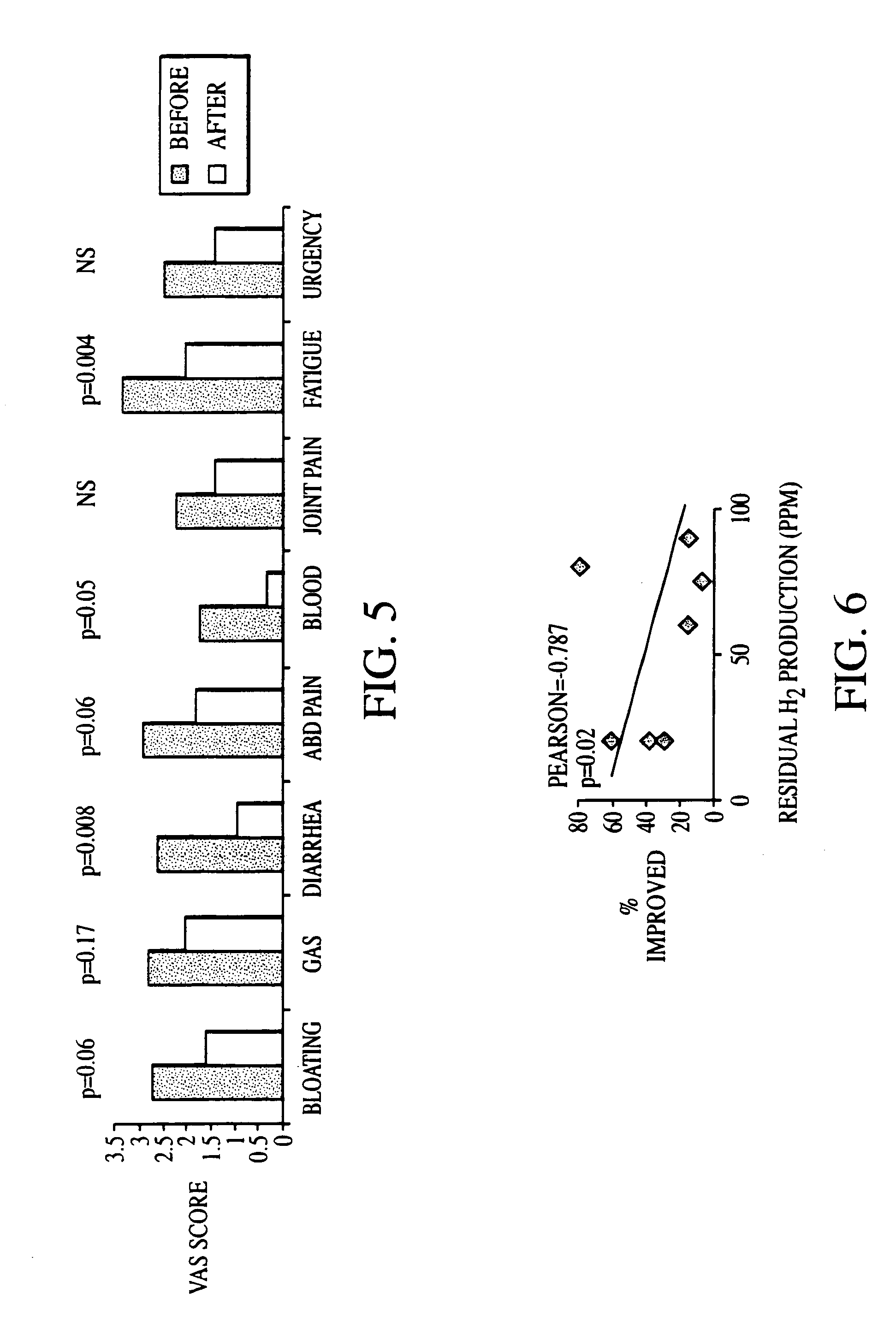Methods of diagnosing and treating small intestinal bacterial overgrowth (SIBO) and SIBO-related conditions
a technology of bacterial overgrowth and sibo, applied in the field of medicine, can solve the problems of not being fully accepted, unable to treat ibs in double-blind clinical trials with dietary fiber supplements, and often depressed and anxious patients with chronic ibs pain, so as to reduce the occurrence or magnitude of bacteria-related toxicity and inhibit the growth of bacteria
- Summary
- Abstract
- Description
- Claims
- Application Information
AI Technical Summary
Benefits of technology
Problems solved by technology
Method used
Image
Examples
example 1
Composition of the Database
[0218]Data were assembled from 202 human subjects from the Cedars-Sinai Medical Center GI Motility Program who completed an extensive questionnaire of health history. These patients were all referred for lactulose breath hydrogen testing (LBHT) by more than 30 private gastroenterologists. These patients were selected by their gastroenterologists to undergo breath testing, because they had symptoms compatible with SIBO. However, the questionnaire focused on general risk factors, associated conditions, and symptoms found in these patients and not specifically the incidence of SIBO. After antibiotic therapy, 59 subjects actually returned for a follow up LBHT and a follow-up questionnaire. This likely resulted in an underestimate of responsiveness to treatment, since only those who failed to respond adequately were likely to return to assess eradication of SIBO.
example 2
Breath Hydrogen Testing
[0219]Subjects were tested after an overnight fast. At time zero, each subject swallowed 15 ml of Chronulac formula, delivering 10 g of lactulose; every 5–20 min thereafter, for 2–4 hours, a 50 cm3 end-expiratory breath sample was taken with an airtight sampling bag. Each breath sample was then analyzed for hydrogen content with a gas chromatograph (Quintron Model DP, Quintron Instrument Co., Division of E. F. Brewer Co, Menomonee Falls, Wis. 53051), standardized using a QuinGas standard as instructed by the manufacturer. Hydrogen peaks were plotted before and after an antimicrobial treatment regimen for comparison. The normal range for the second hydrogen peak was 0 to 20 ppm.
example 3
Diagnosis and Antibiotic Treatment of Irritable Bowel Syndrome
[0220]The two hundred-two (202) human subjects were assessed for SIBO with LBHT. Of the 202 subjects in the database, 95 claimed to have been given a diagnosis of IBS. In addition, a symptom questionnaire was used to determine whether these subjects fulfilled Rome criteria for IBS, and four of the subjects failed to meet the Rome criteria. Crohn's disease was present in 14 of the subjects and four had a history of ulcerative colitis. After these 22 subjects were excluded, 73 subjects remained.
[0221]Among the 107 subjects who stated that they had not previously been given a diagnosis of IBS, 78 met Rome criteria. After the 21 who had Crohn's disease, five who had ulcerative colitis and one with short bowel transit were excluded, 51 subjects remained. Data gathered from these subjects were pooled with data from the previous 73 subjects with suspected IBS, yielding a total of 124 of the original 202 (61%) subjects with a sus...
PUM
| Property | Measurement | Unit |
|---|---|---|
| time | aaaaa | aaaaa |
| pH | aaaaa | aaaaa |
| pH | aaaaa | aaaaa |
Abstract
Description
Claims
Application Information
 Login to View More
Login to View More - R&D
- Intellectual Property
- Life Sciences
- Materials
- Tech Scout
- Unparalleled Data Quality
- Higher Quality Content
- 60% Fewer Hallucinations
Browse by: Latest US Patents, China's latest patents, Technical Efficacy Thesaurus, Application Domain, Technology Topic, Popular Technical Reports.
© 2025 PatSnap. All rights reserved.Legal|Privacy policy|Modern Slavery Act Transparency Statement|Sitemap|About US| Contact US: help@patsnap.com



